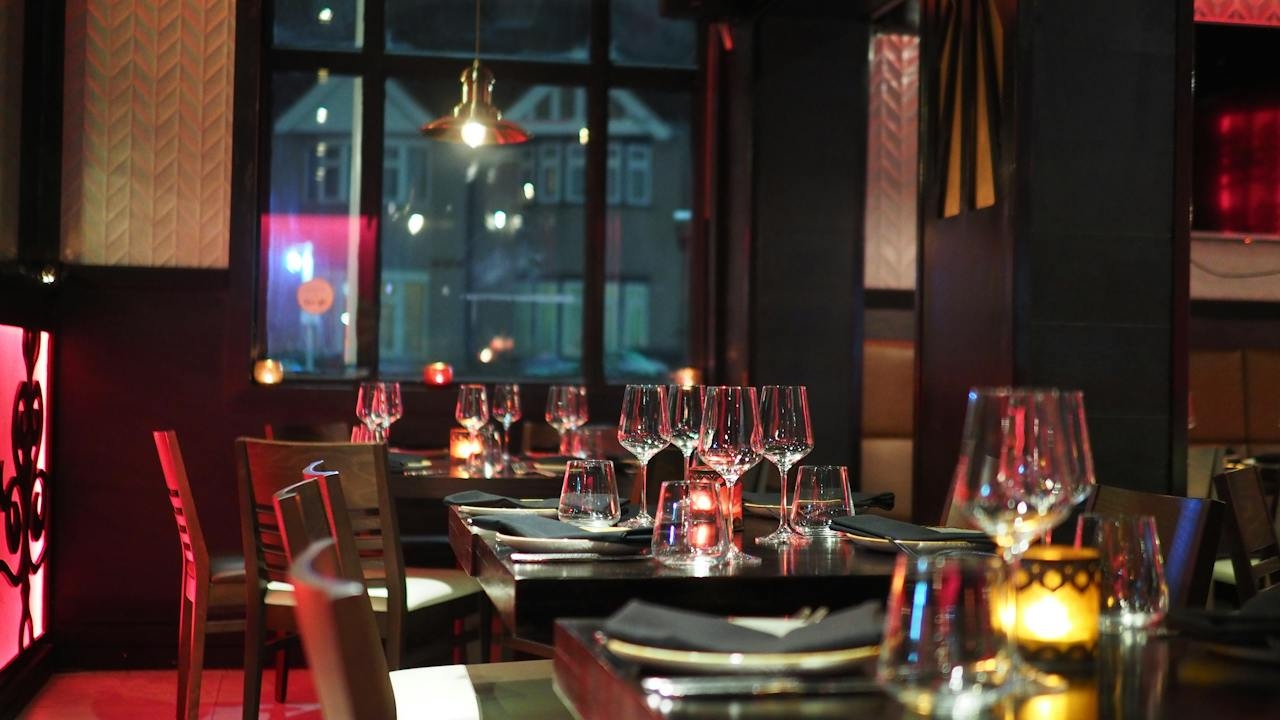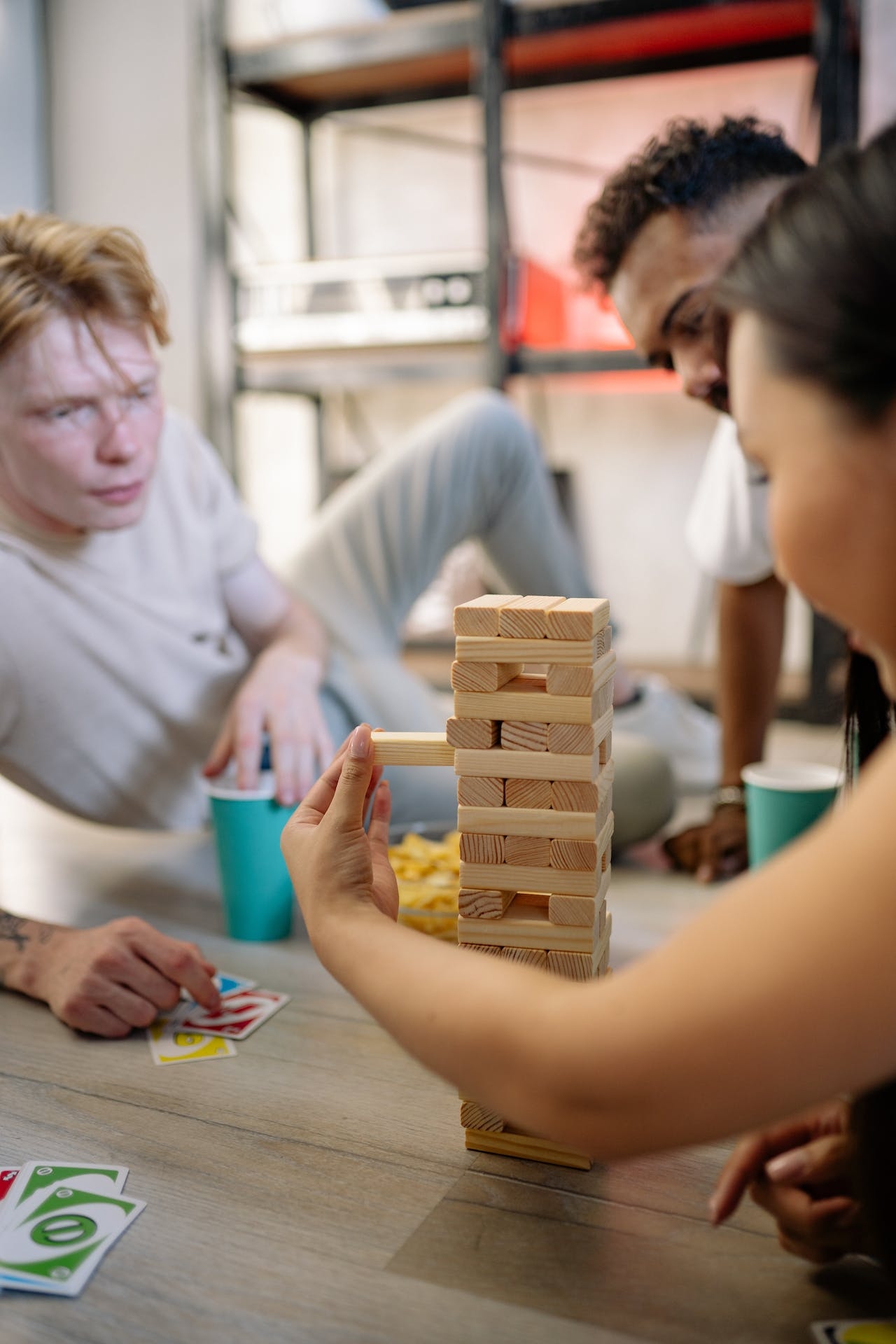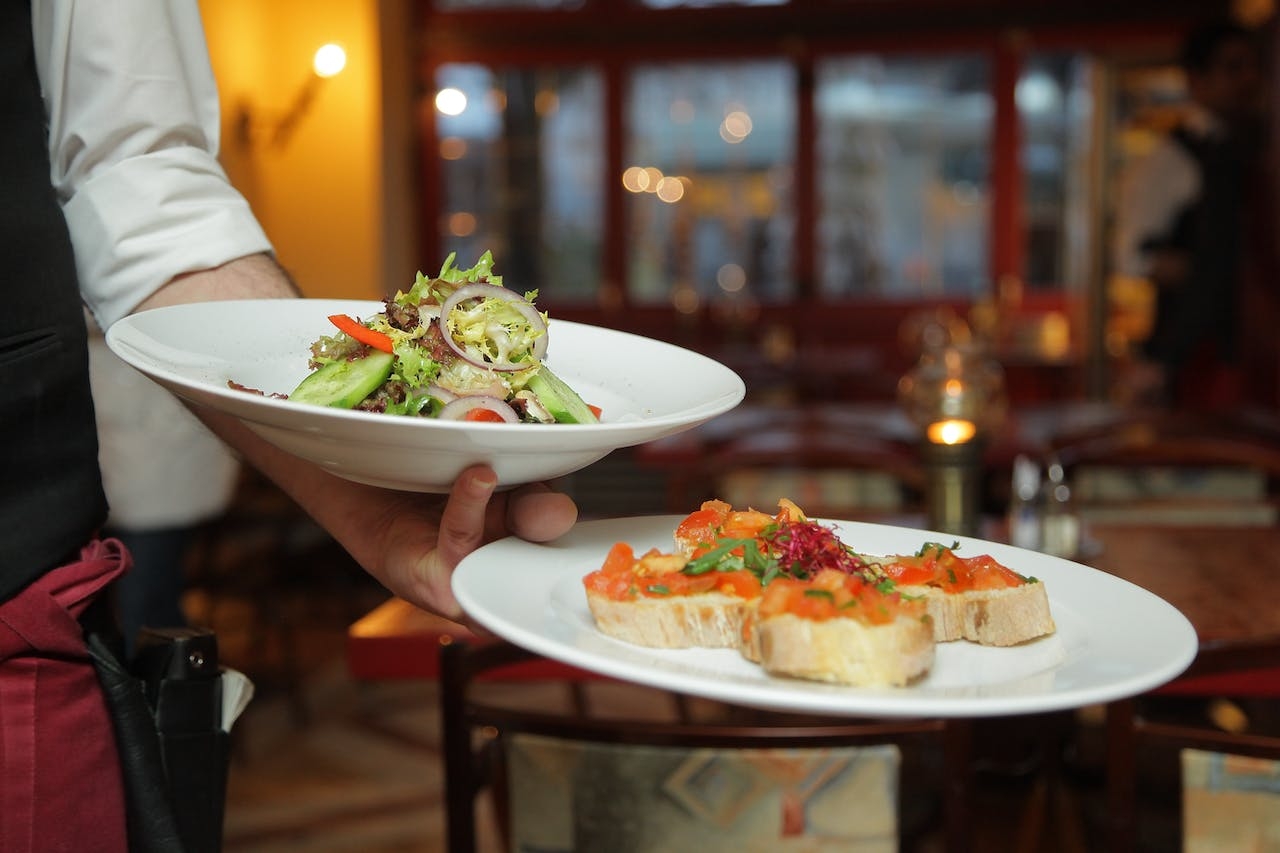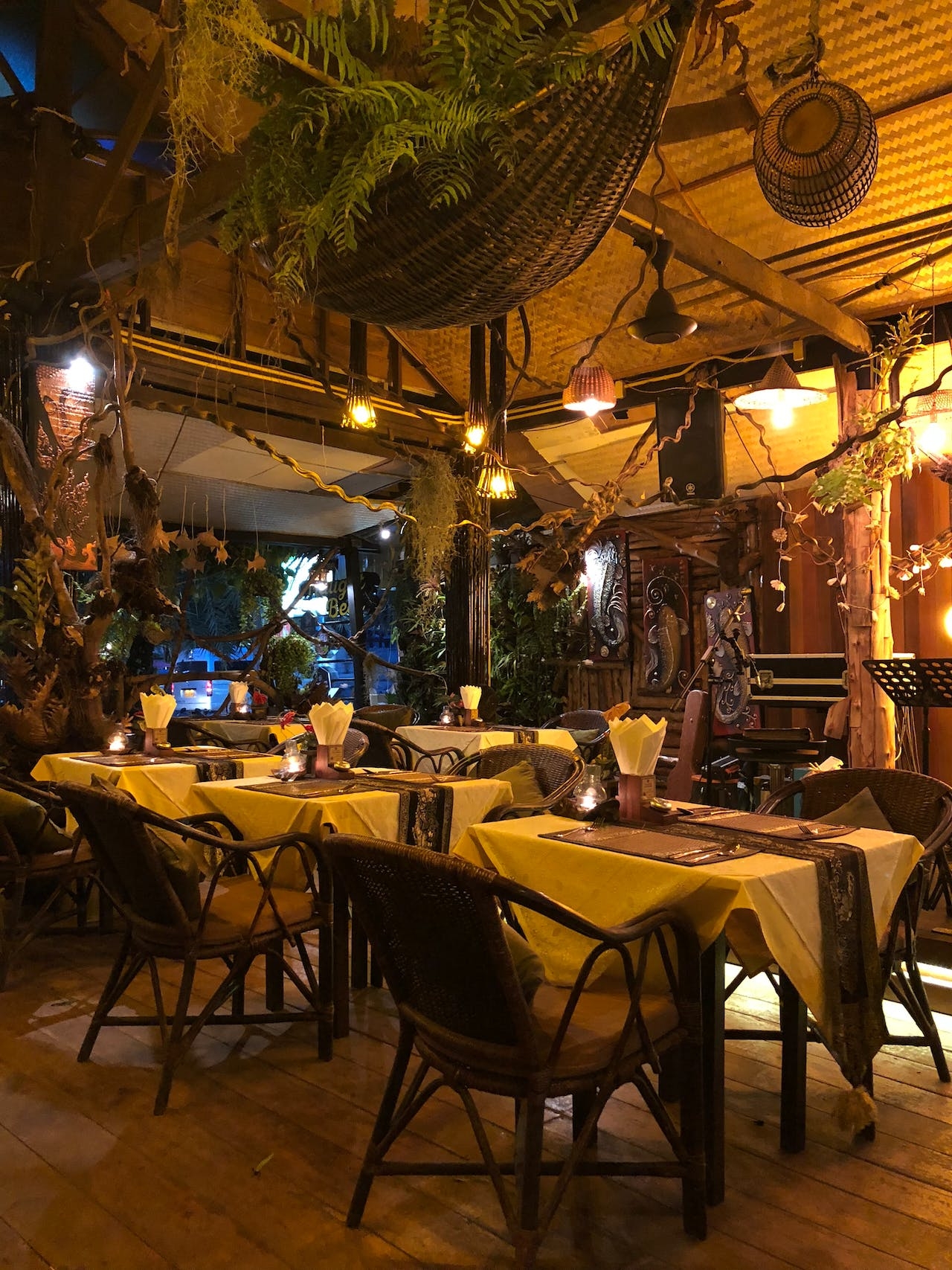Cafe vs Restaurant: How do they differ?
By Anttoni Taimela · 26. January 2024
When deciding where to dine or meet, one often ponders: cafe vs restaurant – what’s the difference?
At its core, a cafe typically offers a casual setting focused on coffee and light meals, making it ideal for quick bites or lounging with a book📚.
In contrast, a restaurant provides a more extensive menu and formal dining experience suited for special occasions or gourmet meals.
Understanding these distinctions can guide your choice for an upcoming outing.
Principal Points
- Cafes serve up good vibes with coffee, light meals, and non-alcoholic drinks in a cozy atmosphere, while restaurants are culinary havens with a vast selection, including alcoholic beverages and a formal ambiance.
- The lines between cafes and restaurants are becoming as blurry as your vision pre-coffee, thanks to the rise of hybrid establishments catering to all tastes, preferences, and dining experiences.
- Whether you’re brewing a budget-friendly hangout or a wallet-weeping celebration, it boils down to personal preference in choosing between the laid-back charm of a cafe and the plush pleasures of a restaurant.
Cafe Origins and Characteristics

Ah, cafes! Steeped in history, these charming establishments have their roots in the Ottoman Empire, making their grand entry into Europe in the 17th century.
The term ‘cafe’ – a French twist on ‘coffee’ – has since become a staple in our culinary lexicon and a synonym for good vibes and yummy bites.
From serving light meals and beverages to being the favorite corner coffee shop, cafes have truly made their mark on the food scene.
Cafes distinguish themselves through a unique combination of light meals, refreshing beverages, and a cozy atmosphere.
Whether you’re a coffee☕ aficionado or just someone looking for a place to unwind, cafes have something for everyone.
Their distinct charm lies in their knack for serving up delightful bites and drinks in a warm, inviting ambiance, making them the go-to place for casual hangouts and intellectual chit-chats.
Coffee Culture
The first recorded cafe, ‘Kiva Han’, opened its doors in Istanbul, Turkey, marking the beginning of what is today known as the coffee culture.
These early coffee houses went beyond simply serving coffee; they offered an array of food items, from pastries to sandwiches, creating the perfect blend of taste and tradition.
These early cafes were more than just coffee shops.
They were social hubs, places where intellectuals would gather over a good cup of joe and a game of chess.
From serving food and beverages to becoming social butterflies’ favorite hangout spots, cafes have come a long way since their inception.
Menu Offerings
What’s on the menu at your favorite cafe? If you’re guessing coffee, you’re only half right.
Cafes have diversified their offerings, serving up everything from light meals and snacks to a variety of non-alcoholic beverages.
Whether you’re in the mood for a hearty sandwich or just a cup of tea, cafes have got you covered.
However, the ambiance is as important as the food and drinks served.
Picture a casual cafe with a laid-back chalkboard menu versus a fancy restaurant with a more formal atmosphere and a classy printed menu. The difference is clear.
Cafes have a relaxed atmosphere, making them the perfect place to grab a quick bite or a leisurely cup of coffee☕.
Atmosphere and Design
Stepping into a cafe is like entering a whole new world, one that’s warm, inviting, and perfectly cozy. With their:
- Rustic wooden furniture
- Warm earthy tones
- Dim lighting
- Cushy seating
Cafes create an atmosphere that’s perfect for unwinding over a cup of coffee or a light meal🥘.
Cafes offer a variety of benefits for individuals seeking a productive space, including:
- Providing a relaxing environment
- Creating the perfect ambiance for students, workaholics, and introverts
- Offering a personal touch that’s hard to find in more formal dining settings like restaurants
Restaurant Origins and Features

As we leave the cozy corners of cafes, let’s step into the world of restaurants, a journey that takes us back to 18th century France.
It all started with the French chef A.
Boulanger, who set up shop in Paris, selling soup under the brand “restaurants.” Derived from the French word ‘restaurer,’ meaning to restore or refresh, the term ‘restaurant’ has since become a catch-all for places where you can enjoy a meal.
A restaurant can be defined as:
- A culinary haven that offers a vast selection of dishes and drinks
- All served with meticulous attention to detail
- From the location and pricing to the vibe
- Restaurants put a lot of effort into crafting the perfect dining experience.
Fine Dining Experience
Fine dining restaurants stand out with their sophisticated ambiance, lavish multi-course meals, and exquisite cuisine, providing an upscale dining experience.
However, the exceptional service, from the minute you walk in until you leave, contributes significantly to the overall dining experience.
Imagine dining at a whole new level, with fancy food presentations, classy table setups, and top-notch service.
It’s all part of a slow, multi-course meal that takes dining to a whole new level of luxury.
From the food to the service, everything is meticulously crafted to perfection, making fine dining a truly unforgettable experience.
Menu Variety
When it comes to variety, restaurants have got cafes beat.
With a smorgasbord of dishes, including appetizers, entrees, and desserts, restaurants cater to all kinds of dietary preferences and tastes. And it’s not just about the food.
From classic cocktails to popular bar drinks and aged spirits, restaurants offer a wide range of beverages, catering to all your dining needs.
Whether you’re in the mood for a hearty steak or a light salad, restaurants have got you covered.
Ambiance and Service
Restaurants create a formal ambiance with elegant interiors and attentive service, aiming to provide a memorable dining experience.
Whether you’re hosting a large group or planning a special occasion, restaurants have the space and the setting to handle it all.
However, the importance of impeccable service should not be underestimated.
From escorting you to your table to taking your order and bringing your food, restaurants offer a level of service that’s hard to find in more casual settings like cafes.
Comparing Cafes and Restaurants: Key Differences
Having explored the world of cafes and restaurants, it’s time to highlight the key differences between these two types of establishments.
At a glance, cafes are all about coffee and light bites, while restaurants offer a wider range of dishes and drinks.
However, the differences go beyond the menu.
With varying food and beverage offerings, options for alcoholic beverages, and a range of unique concepts, cafes and restaurants cater to an array of dining needs and preferences.
Whether you’re a coffee connoisseur looking for a chill spot or a foodie seeking a fine dining experience, the choice between a cafe and a restaurant can make all the difference.
Food and Beverage Options
When it comes to food and beverages, cafes and restaurants offer different options.
Cafes focus on coffee and light fare, often serving pastries and sandwiches alongside a variety of non-alcoholic beverages.
Restaurants, on the other hand, offer a more extensive selection of dishes and drinks, catering to a wider range of tastes and preferences.
In fact, the menu at a typical restaurant is designed to fit the standard paper size of 8.5” x 11”.
If the menu goes beyond 12” x 18”, they might use separate menus for wine, dessert, and kids to keep things manageable.
It’s all about offering customers a wide variety of choices and creating a dining experience that caters to everyone’s needs.
Alcoholic Beverages
While restaurants typically serve a wide range of alcoholic drinks, cafes tend to stick to coffee-based concoctions and non-alcoholic options. Some popular drinks you can find at restaurants include:
- Daiquiri
- Gimlet
- Dirty Martini
- Vodka Gimlet
While most restaurants, including fast food options, serve something for every palate, it’s important to remember that not all restaurants that serves food, including those that serves light meals, may cater to specific dietary preferences or restrictions.
Novelty Cafe Concepts

The emergence of novelty cafe concepts has added a new dimension to the cafe scene, with novelty cafe concepts spreading across the globe.
From cat cafes and board game cafes to study cafes, these unique establishments offer out-of-the-box experiences centered around specific themes or activities.
These novelty cafes have taken the world by storm, offering customers a wider range of options and experiences to choose from.
Whether you’re an animal lover, a board game enthusiast, or a student looking for a quiet place to study, there’s a novelty cafe out there for you.
Choosing Between a Cafe and Restaurant

Choosing between a cafe and a restaurant isn’t always easy. Several factors come into play, including budget, occasion suitability, and personal preferences.
Whether your decision is budget-driven or occasion-specific, a clear understanding of the differences and similarities between cafes and restaurants can guide you towards the right choice.
The decision between the relaxed atmosphere of a cafe and the formal setting of a restaurant often boils down to individual preference.
The decision between a cozy corner cafe or an upscale restaurant ultimately rests in your hands. After all, the best place to dine is one that caters to your tastes and preferences.
Budget Considerations
Budget often plays a significant role when deciding where to dine out.
Cafes, with their focus on serving light meals and beverages, often come out as the more budget-friendly option compared to restaurants offering more substantial meals.
From a hearty sandwich to a cup of coffee, you can get a satisfying meal at a cafe without breaking the bank.
But don’t let the price tag fool you. While restaurants tend to be pricier than cafes, they offer a more extensive menu and a more formal dining experience.
Whether you’re in the mood for a multi-course meal or a glass of fine wine, restaurants cater to a wide range of tastes and budgets.
Occasion Suitability
The nature of the occasion can also influence the decision between a cafe and a restaurant.
Cafes, with their relaxed atmosphere and casual menu, are perfect for:
- casual meetups
- intimate gatherings
- catching up with friends over a cup of coffee
- working on a project
Cafes offer the perfect setting, especially at your favorite corner cafe.
On the other hand, restaurants are more suited for formal events and celebrations.
With their elegant interiors, extensive menu, and top-notch service, restaurants can cater to large groups and special occasions.
Whether it’s a wedding reception, a birthday party, or a corporate event, restaurants offer the space and the setting to make any occasion memorable.
Personal Preferences
Personal preferences also play a key role in the choice between a cafe and a restaurant. Some factors to consider include:
- Dietary restrictions
- Preference for a specific type of cuisine
- Atmosphere and ambiance
- Price range
- Convenience and location
Your personal preferences can influence your decision.
Restaurants, with their wide variety of dishes, can cater to a wide range of dietary preferences.
Whether you’re a vegan, vegetarian, or have a gluten intolerance, restaurants usually offer a range of options to suit your dietary needs.
Cafes, on the other hand, may be more limited in their offerings, but they offer a more relaxed and casual dining experience.
The Evolution of Cafes and Restaurants
As observed, cafes and restaurants have both established their respective niches in the dining scene.
But over time, the lines between the two have blurred.
Cafes have expanded their menus and services to resemble restaurants, while restaurants have adopted elements of cafe culture to appeal to a wider audience.
The evolution of cafes and restaurants, with cafes expanding their meal offerings and restaurants catering to coffee lovers, has broadened the spectrum of dining options.
Today, the choice between a cafe and a restaurant isn’t as clear-cut as it used to be, offering diners a variety of experiences to choose from.
Blurred Lines
The blurring of lines between cafes and restaurants can be seen in the rise of hybrid establishments.
These establishments combine elements of both cafes and restaurants, offering a unique dining experience that caters to a variety of preferences and occasions.
Hybrid establishments, whether it’s a cafe with a restaurant-like menu or a restaurant featuring a cozy cafe corner, amalgamate the best aspects of both worlds.
They cater to a variety of preferences and occasions, offering a unique dining experience that’s both casual and formal, relaxed and refined.
Hybrid Establishments

Hybrid food establishments, such as gastropubs or cafe-restaurants, are becoming increasingly popular.
These establishments offer a unique blend of the relaxed atmosphere of a cafe and the formal dining experience of a restaurant.
From a gastropub serving artisanal coffee to a cafe-restaurant offering a full menu of meals, hybrid establishments cater to a wide range of preferences and occasions.
They offer a unique dining experience that’s both casual and formal, combining the best elements of cafes and restaurants.
Summary
We’ve journeyed through the origins, characteristics, and evolution of cafes and restaurants, exploring their unique features and the key differences between them.
Whether you’re a coffee aficionado, a foodie, or someone looking for a unique dining experience, the choice between a cafe and a restaurant can make all the difference.
From casual meetups to formal events, there’s a place for everyone in the diverse world of dining.
So the next time you’re planning a meal out, remember: the best choice is the one that catifies your tastes and preferences.
Frequently Asked Questions
What is the difference between a restaurant and cafe?
Restaurants serve substantial meals in a formal atmosphere, while cafes serve lighter fare in a relaxed atmosphere.
It’s like the difference between a four-course dinner and a cozy brunch with friends.
Can a cafe be called a restaurant?
A cafe can indeed be called a restaurant, as cafes also serve food and beverages, and fall under the umbrella term of a restaurant.
So, next time you visit your favorite cafe, feel free to refer to it as a charming little restaurant!
What is difference between cafe and diner?
A cafe offers a diverse menu with alcoholic beverages, while a diner serves classic American dishes in a casual setting.
So, if you’re in the mood for fancy lattes and cocktails, head to the cafe; for a comforting burger and shake, the diner’s the place to be!
How have cafes and restaurants evolved over time?
Cafes and restaurants have evolved by adapting to changing consumer preferences and needs.
Some cafes now offer expanded menus and services akin to restaurants, while certain restaurants have incorporated elements of cafe culture.
So, it’s safe to say that these establishments have come a long way from the standard coffee and dining experiences from way back when.
What is a hybrid establishment?
A hybrid establishment seamlessly blends the best of both cafes and restaurants, creating a diverse and appealing dining experience.

